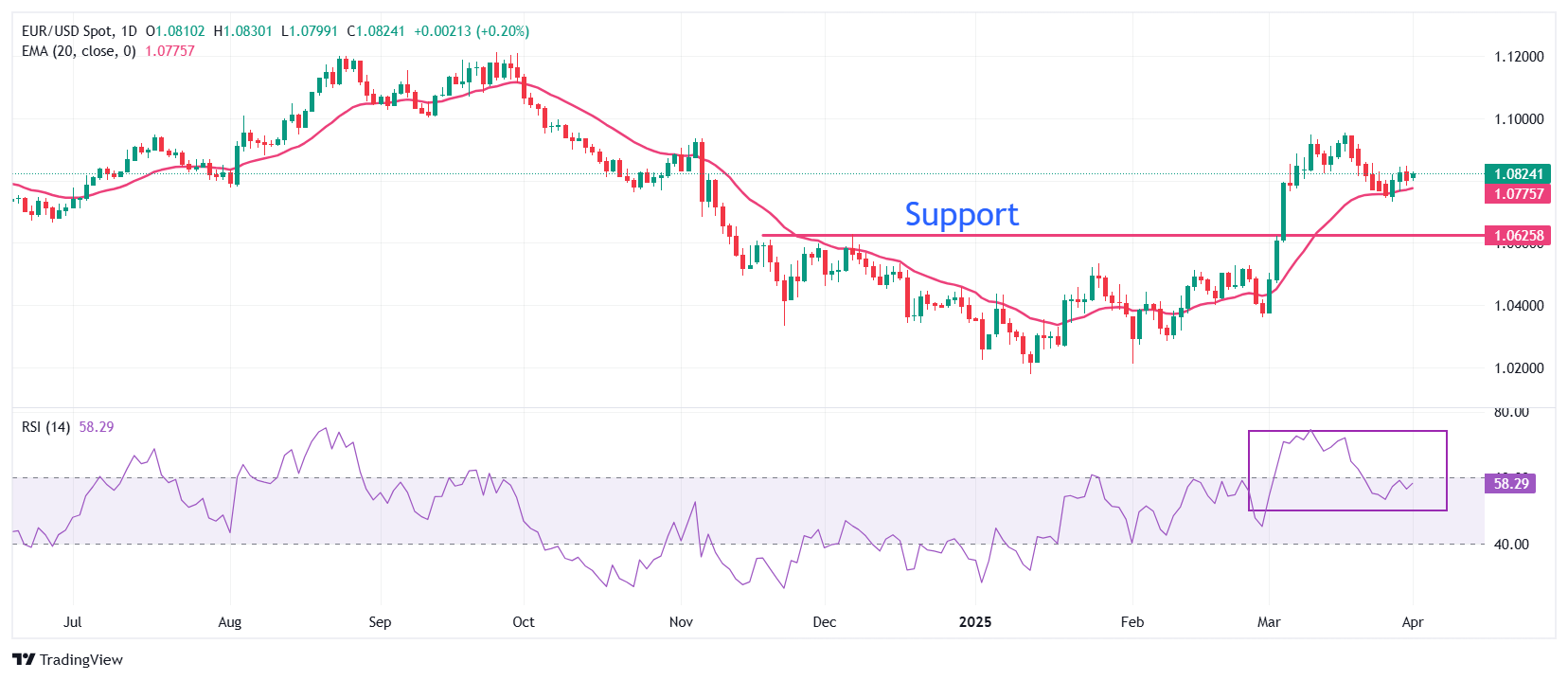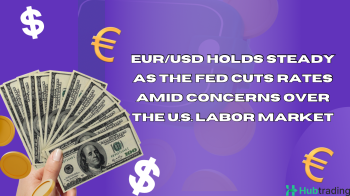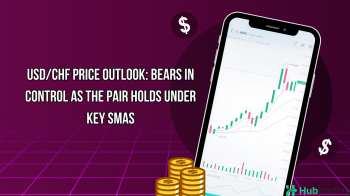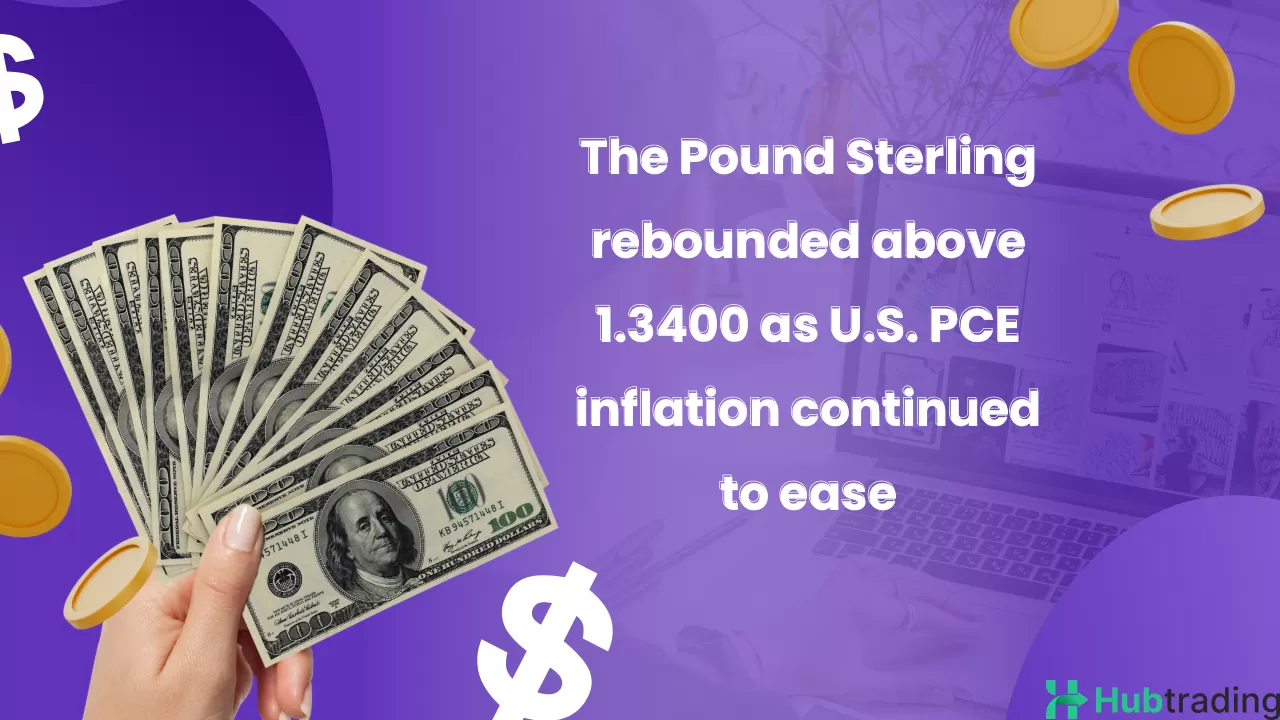-
EUR/USD rises to around 1.0820 following the release of the preliminary Eurozone HICP data for March.
-
Eurozone inflation accelerates in March but shows a slowdown on a year-over-year basis.
-
Market participants are divided on whether Trump’s tariffs will trigger a recession in the US.
EUR/USD attracted some bids and ticked higher to near 1.0820 during Tuesday's European trading session, following the release of the preliminary Eurozone Harmonized Index of Consumer Prices (HICP) for March and the Eurozone Unemployment Rate for February.
On a monthly basis, both the headline and core HICP – which excludes volatile items such as food, energy, alcohol, and tobacco – rose by 0.6% and 1%, respectively.
Over the 12 months to March, the Eurozone HICP increased by 2.2%, as expected, slower than the 2.3% rise seen in February. Similarly, the core HICP grew moderately by 2.4%, below the expected 2.5% and the previous release of 2.6%.
The Eurozone Unemployment Rate dropped to 6.1% in February, from the previous release and estimates of 6.2%.
Despite the Eurozone inflation data, the European Central Bank's (ECB) monetary policy outlook is likely to remain unaffected, as US President Donald Trump is set to announce a detailed reciprocal tariff plan for all US trading partners on Wednesday. These tariffs are expected to be inflationary and detrimental to growth in the Eurozone.
Market participants anticipate that Trump will target the Eurozone with significant tariff measures, as he has previously criticized the European Union (EU) for unfair trade practices against the US.
The announcement of a 25% levy on imports of foreign cars and light trucks into the US, effective Wednesday, has already led financial market participants to downgrade their growth forecasts for Germany, given that 13% of the country’s total auto exports go to the US.
In response, the European Commission (EC) has prepared countermeasures, as confirmed by EC President Ursula von der Leyen during European trading hours on Tuesday. She stated, “We do not necessarily want to retaliate, but if necessary, we have a strong plan, and we will use it,” adding that the EU has the power to “push back against US tariffs.”
On Monday, ECB President Christine Lagarde remarked in an interview with France Inter radio that she views April 2, referred to as “Liberation Day” by Trump, as a pivotal moment to take “better control of our destiny” and move towards greater independence.
Daily Digest: EUR/USD Remains Cautious Ahead of Trump’s Tariffs
- EUR/USD remains cautious, as the outlook for both the Euro and US Dollar is uncertain due to the upcoming tariffs from President Trump. Market participants expect these tariffs to lead to economic shocks for the US, with domestic importers facing higher costs.
- There are growing concerns that Trump’s economic policies could push the US into a recession. Recession risks increased after several US officials, including President Trump, did not rule out the possibility of economic damage caused by these new policies. Investment bank Goldman Sachs raised its recession probability to 35%, up from 20%, citing a sharp decline in household and business confidence.
- However, International Monetary Fund (IMF) Managing Director Kristalina Georgieva downplayed recession fears in an interview with Reuters NEXT, stating that while Trump’s tariffs have created uncertainty, they have not had a dramatic impact on the global economy.
- On the economic front, investors are awaiting a range of business and labor market data that will influence expectations for the Federal Reserve’s monetary policy. In Tuesday's session, attention will be on the US S&P Global and ISM Manufacturing Purchasing Managers Index (PMI) for March, as well as the JOLTS Job Openings data for February, which will be released during the North American session.
Technical Analysis: EUR/USD Holds Within Monday’s Range

EUR/USD edged up to around 1.0820 against the US Dollar on Tuesday but remains within Monday’s trading range. The near-term outlook for the pair remains firm, supported by the 20-day Exponential Moving Average (EMA), which sits around 1.0776.
The 14-day Relative Strength Index (RSI) has cooled below 60.00, indicating that bullish momentum may have faded, but the upside bias remains intact.
Looking ahead, the December 6 high of 1.0630 will serve as a major support zone, while the psychological level of 1.1000 will act as a key resistance level for Euro bulls.





